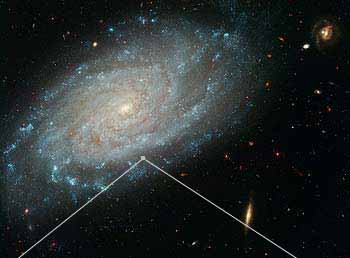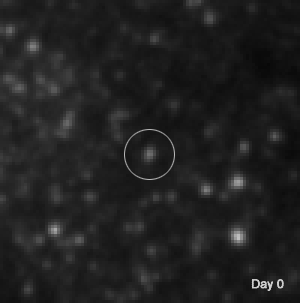Cepheid Stars
Via Cepheids, astronomers have measured well beyond the range of distances determined by parallax. In April 2003, Reiss and others used the Hubble Space Telescope (HST) to obtain light curves from Cepheids in NGC 3370, a spiral galaxy 98 million light years away. Source: Hubble Site 2003-24 NGC 3370 Cepheid
The lower image shows a tiny portion of the upper image. It is an animated set of frames captured by the Hubble Space Telescope. A Cepheid with a period of around 50 days is pulsating at the centre of the image. The superb resolving power of the HST separates the pulsating star from the mass of its neighbours. This star exhibits the classic light curve of a Cepheid: a slow fade followed by a rapid rise back to maximum brightness.
In November 1994 a type Ia supernova occurred in NGC 3370. It is known as SN 1994ae. At the time, it was one of the nearest and best observed supernovae since the advent of modern digital detectors. Source: Hubble Site 2003-24
Now that the HST has observerd a Cepheid in NGC 3370, the Cepheid and Type 1a Supernova astronomical distance scales can be directly calibrated.

